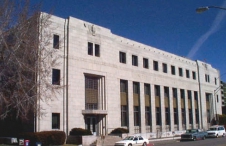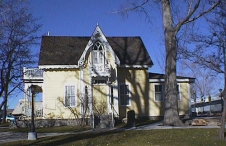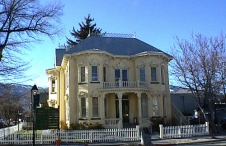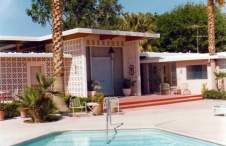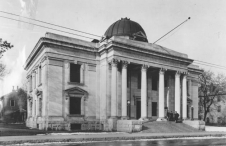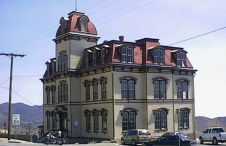Greek Revival Style Architecture in Nevada
In recognition of the legacy of democracy the United States inherited from the ancient world, classical architecture repeatedly became an inspiration for design in the American Republic. Architectural historians refer to one of the earliest phases of this borrowing as Greek Revival, with eighteenth-century roots and archaeological inspiration. The style was spread by carpenter's guides and pattern books, and its greatest popularity was between 1820 and 1860. Early settlers built Greek Revival houses throughout northern Nevada during the 1850s and 60s, and many survive.
Greek Revival structures imitate the overall appearance and details of classical Greek temples. These include pedimented gables with eave returns, front porches with colonnades, and symmetry. In more formal expressions of Greek Revival, columns and pilasters—half columns adhered to building elevations—are typically Ionic or Doric style.
The use of Greek Revival architecture in Austin's Lander County courthouse is particularly remarkable. Built in 1872, the elegant building is thought to be the nation's last Greek Revival courthouse.
Article Locations
Related Articles
Further Reading
None at this time.
